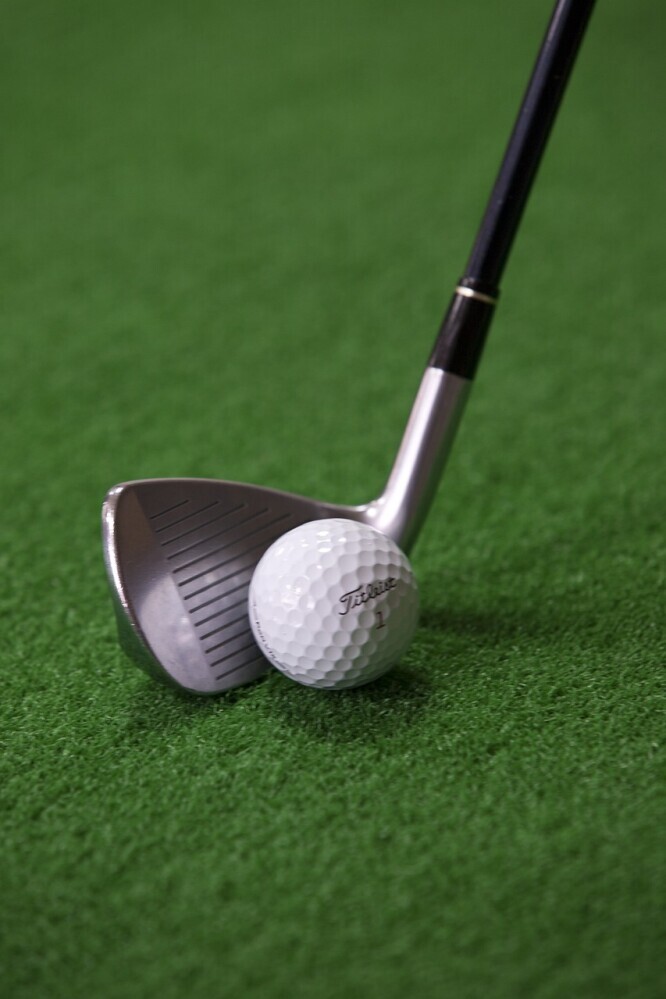What Is The Loft Of A Golf Club?


Fore! Quick note: a few links here are affiliate links. If you snag gear through them, I earn a small commission — no extra strokes added to your game.
Loft in the world of golf is all about angles—the angle of the club face to be exact. Imagine every club like a tool in your toolkit, each designed for different jobs on the course. The loft determines how high and how far the ball flies when you take a swing. Come into the golf vikings’ classroom, because we’re learning all about loft.
Knowing the loft of your club helps you understand what kind of shot to expect. A higher loft usually means the ball will fly higher and land softer, making it ideal for short, precise shots. Think about your pitching wedge swinging gracefully to drop the ball gently on the green. On the flip side, a club with lower loft, like your driver, sends the ball lower and longer. Perfect for those powerful tee shots.
It’s not just about getting the ball in the air; it’s about control and strategy. Knowing the loft of each club lets you make smarter choices about which club to use, depending on the situation. Whether you’re trying to clear an obstacle, or aiming for a specific spot on the fairway, loft is your secret weapon. And using it wisely can set you up for success on the golf course.
Understanding loft also gives insight into the design of the club. Club manufacturers tweak these angles meticulously to give each club its own unique character, making them more versatile tools for different game scenarios. While two different brands might both offer a 9-iron, slight differences in loft can make each one behave a little differently. So pay attention to the loft of your club so you can be sure of your intention.
So, when you ask, ‘what is loft on a golf club?’, think of it as your course map. Each loft can direct your ball’s journey, guiding it toward that perfect flight path. Understanding loft means stepping onto the course with confidence, equipped with the knowledge to really own your game. So why do you need to care about loft? Let’s talk about it.
Loft plays a major role in spin, which ties directly into understanding golf ball spin.
Ready to level up your golf game? Click here.

The Purpose Behind Golf Club Loft
Ever wondered why golfers carry around so many different clubs? It’s all about having the right tool for the job, and loft is a big part of that. Every club in your bag is crafted to serve a different purpose on the course, thanks to how their loft affects the ball’s flight and distance. So you will be determining your shot based off of not only the distance that your club can reach, but by the loft depending on how high you want your ball to go.
Loft plays a crucial role in setting the ball’s trajectory. The part where the rubber meets the road—er, club face meets the ball—is where loft shines. High-loft clubs, like irons and wedges, are your go-to when you need the ball to fly high and land softly, perfect for precise shots around the green. In contrast, your driver boasts minimal loft designed to launch the ball far with a low, powerful arc, making it ideal for those long fairway runs.
Why have loft at all? Well, it comes down to control and adaptability. On the course, conditions change—elevation, wind, obstacles—and varying lofts give golfers the flexibility to adapt their playstyle. Basically, loft lets each club specialize in different types of shots. Without loft, you’d be limited to flat, uninspired swings with little control over distance or arc. Luckily we have clubs with loft.
Over time, the evolution of loft has been vital. Designers have honed in on specific loft angles to meet players’ needs, striking a balance between increased shot height and distance control. This fine-tuning ensures each club in your set has a purpose, ready to tackle the challenges of any course layout.
Understanding why golf clubs have different lofts can seriously up your game. Recognizing which club will give you the trajectory you need lets you make smarter decisions on the course, leading to better performance. Loft isn’t just about hitting the ball; it’s about strategically winning the game. So how much loft are we getting from each of our clubs?
High lofted clubs are especially important in the short game, which you can dive into in short game mastery.

Exploring the Range of Loft in Golf Clubs
When you’re staring down at a set of golf clubs, you’re looking at a range of lofts each crafted to perform distinctively on the green. From the flat-faced driver to the sharply angled lob wedge, every club comes with its own loft degree to meet specific shot demands.
Drivers usually kick off the line-up with the lowest loft, around 8 to 13 degrees. This low angle suits long, sweeping drives, sending the ball soaring across the fairway with minimal lift. The task here is less about height and more about distance and control on open terrain. Typically when driving you are going for the most distance and not so worried about getting high arc on your ball.
Moving up the range, fairway woods and hybrids sit between 14 to 20 degrees, bridging the gap between drivers and irons. These clubs provide a bit more lift, useful for longer shots when you need to clear a few obstacles along the way without sacrificing distance. But they do not offer as much loft as your irons.
Irons show off the middle section and displays a wide range in the loft spectrum. Starting from around 20 degrees with a 3-iron and increasing to about 45 degrees for a 9-iron, these clubs offer a balanced approach. Whether you’re making your way from the fairway with a 7-iron or closing in with a 9, their varying lofts accommodate medium-range shots with a mix of height and trajectory. So your lower irons will have lower loft and the loft will increase progressively as you go into your higher irons.
Wedges round out the selection with the highest lofts, from pitching wedges around 48 degrees to lob wedges up to 64 degrees. These are your precision tools, designed for high arcs and soft landings. Perfect when you need that gentle touch to navigate around the green or out of a tricky bunker.
This is where the beauty of loft really shines, as these clubs were designed to get the highest loft possible. These can come in handy when you need high arc on your ball in order to either minimize ball roll when shooting onto the green, or to hit your ball over the lip of a bunker or steep obstacle.
The diverse range of lofts available means you’re equipped for any scenario. Whether facing a wide-open and flat fairway or needing to pop the ball high over a sand trap, understanding how each club’s loft can handle these challenges helps refine your strategic approach on the course. So how can we use loft to perfect our gameplay?
Wedges with different lofts are crucial tools—check out the best sand wedges for beginners to see how loft helps in bunkers.

Mastering Club Loft for Perfect Gameplay
Using loft effectively can transform your golf game into a strategic masterpiece. It’s about knowing when and how to use each club to its fullest potential, depending on the course or shot you’re facing. Every course, hole, bunker, or green can present its own challenges.
Clubs with more loft are your go-to when you need a high trajectory. Picture a situation where you’re in the rough behind a rock wall or high lip of a sand bunker. That high loft can get you out of tricky spots, allowing the ball to rise quickly and land softly, preventing it from rolling far once it hits the green.
On the flip side, less loft means a lower, more powerful shot. Useful for driving the ball over long distances with a driver or even an iron. This is perfect when you need to cover more ground, especially when faced with strong headwinds, as these shots cut through the air with less upward resistance. Keeping your ball low can be vital when playing in wind or even when trying to avoid tree branches.
So how do you leverage this on the course? Start by familiarizing yourself with each club, practicing to see how their loft affects your shots. Spend time at the driving range experimenting with different clubs under various conditions, taking note of how each change in loft alters the ball’s flight. This practice will pay off massively when it’s game time. You will begin to know what type of loft you need for each situation you find yourself in on the course.
Perhaps most importantly, let the conditions guide your club choice. Wind speed, angle of the shot, and obstacles all play into which loft level will serve you best. With practice comes the ability to make these quick decisions, picking the right club on the fly to shape shots that win games.
By mastering the loft of each club, you don’t just react to the game—you start to control it. Understanding lofts allows you to not only fit each club to your play style but also adapt to changing conditions seamlessly, making every swing count toward lowering that score. I’ll see you out on the golf course, hitting with that loft like a dream.
Loft also determines launch height and distance, making it a key factor when picking the most forgiving drivers